#Florida Softshell Turtle
Explore tagged Tumblr posts
Text
The Florida Softshell Turtle rescued yesterday at Truman Avenue and Packer Street during the high water event was returned to the wild early this morning in a safe, brackish environment.
50 notes
·
View notes
Text

Florida softshell turtle By: Hugh H. Schroder From: Natural History Magazine 1943
#florida softshell turtle#softshell turtle#turtle#reptile#1943#1940s#Hugh H. Schroder#Natural History Magazine
62 notes
·
View notes
Text
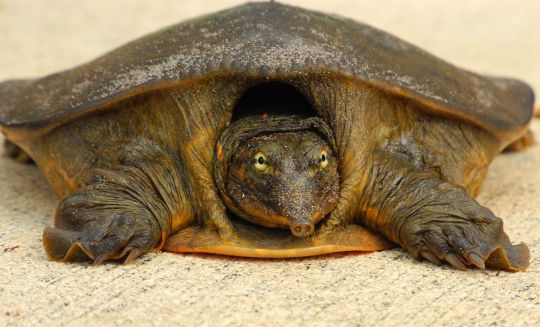
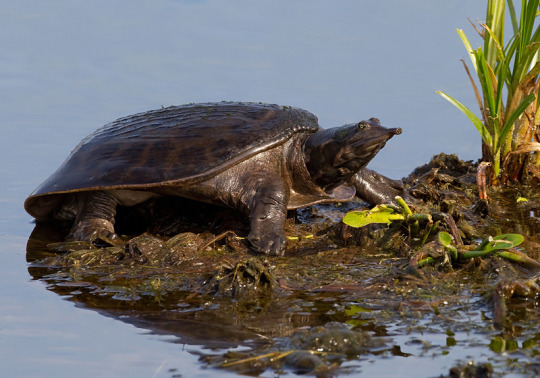

Feeling Out the Florida Softshell Turtle
The Florida softshell turtle (Apalone ferox) is a species of softshell turtle that resides only in the southeastern tropics of the United States, especially along the Atlantic Coast and the Gulf of Mexico. Within this range, they can be found in a number of freshwater environments, including ponds, lakes, swamps, marshes, and urban catchments; they may occasionally also occur in the mouths of slower moving rivers and streams. They generally prefer more muddy bottoms, in which they can bury themselvesand forage for food.
Florida softshell turtles have a highly varied diet, obtained through both active predation and scavenging. When hunting, they may bury themselves at the muddy lake bottom and wait for potential prey to come close enough for an ambush. They are largely carnivorous, feeding on fish, insects, crustaceans, frogs and mollusks, as well as the occasional aquatic plant. Adults are primary predated upon by alligators, while juveniles and eggs may fall prey to foxes, raccoons, birds, and large fish.
Although A. ferox is almost entirely aquatic, adults will readily move overland to find more suitable habitat. They are also frequently spotted basking on rocks or logs. Adults are highly aggressive, and will attack anything they percieve as a threat, including birds, fish, other turtles, and people. In addition to their ferocious bite, they also emit a foul-smelling musk to drive away potential predators.
Mating for the Florida softshell turtle occurs once a year, in the spring from March to July. After mating, females lay their eggs along river or lake banks in clutches of 9-24 eggs. Although they only mate once, females may lay anywhere from 2-7 clutches in a single year. Each clutch incubates for 56 to 80 days, and are immediately independent. Males reach maturity at only 2 years old, while females take 5-8 years; both sexes may live to be over 20 years old in the wild.
Although perhaps not the most attractive turtle, the A. ferox has a very striking appearance. They have a large, flattened body which is covered-- limbs and shell both-- in leathery, olive green or brown skin, with a lighter underside. The shell may also sport darker spots, which help the individual blend in to the muddy substrate. The head is specially distinctive, with a long neck and flattened skull, terminating in a pointed, tubular nose. Individuals may use their extended nostrils to breathe without exposing their body above water. Female Florida softshell turtles are much larger than males; 40.1 cm (15.8 in) in length and 6.65 kg (14.7 lb) compared to only 35 cm (14 in) and 2.68 kg (5.9 lb).
Conservation status: The Florida softshell turtle is considered Least Concern by the IUCN. However, they are threatened by harvesting for meat and the pet trade, as well as habitat loss.
If you like what I do, consider buying me a ko-fi!
Photos
Andrea Westmoreland
Paul Cools
J.D. Willson
#florida softshell turtle#Testudines#If you like what I do#consider buying me a ko-fi!#softshell turtles#turtles#reptiles#freshwater fauna#freshwater reptiles#wetlands#wetland reptiles#lakes#lake reptiles#north america#southern north america
93 notes
·
View notes
Text
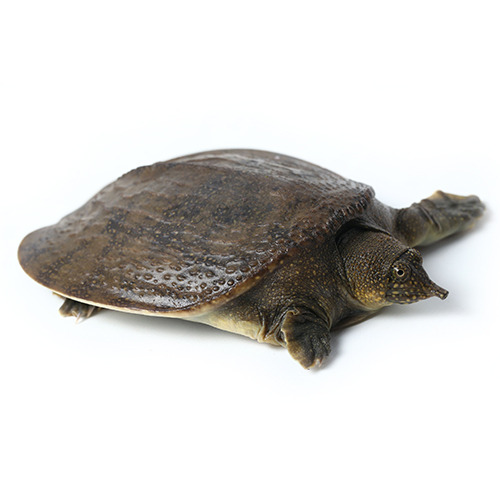
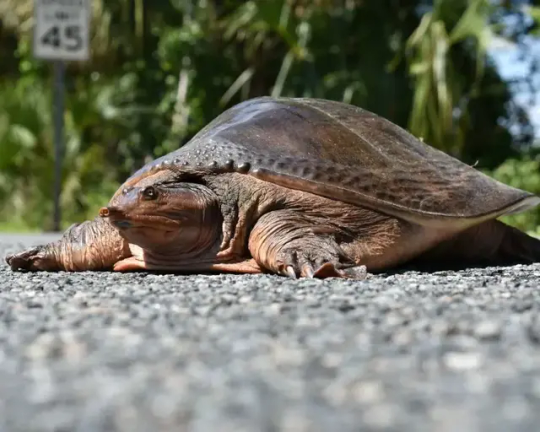
#my polls#tumblr polls#polls#animal polls#poll blog#animals#turtle#softshell turtle#florida softshell turtle#herpetology#reptiblr
29 notes
·
View notes
Text
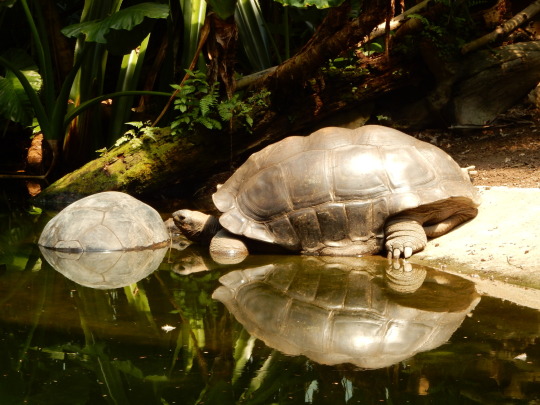
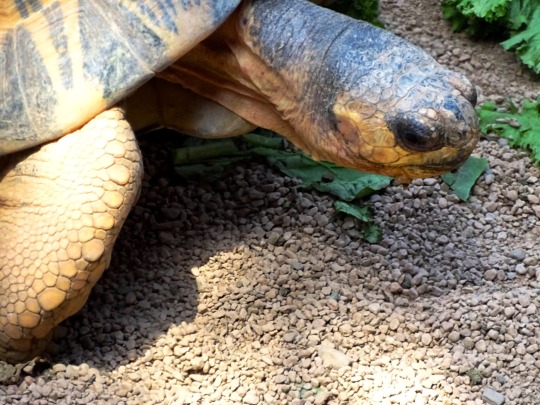
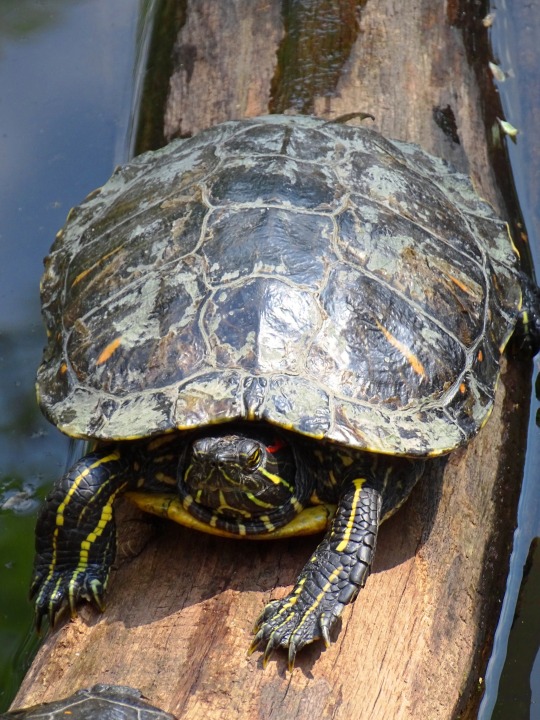

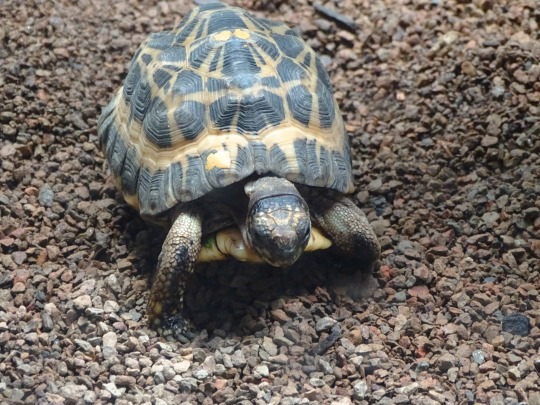

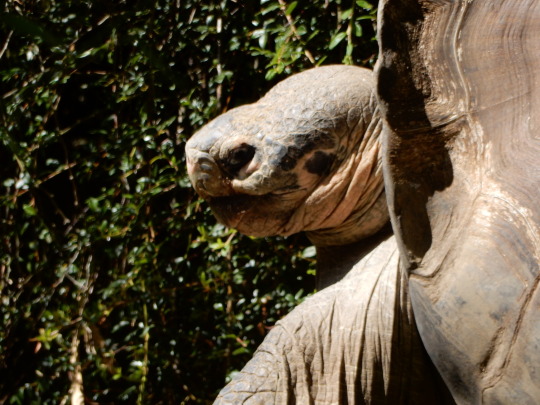
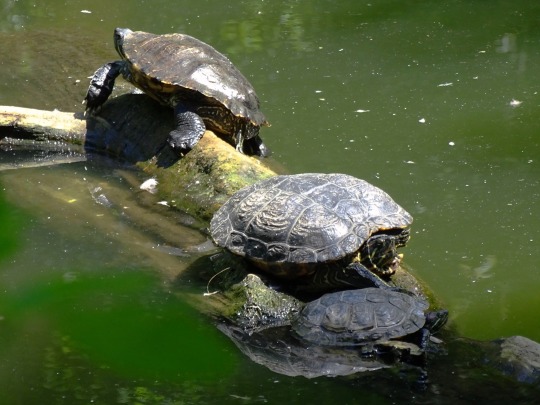
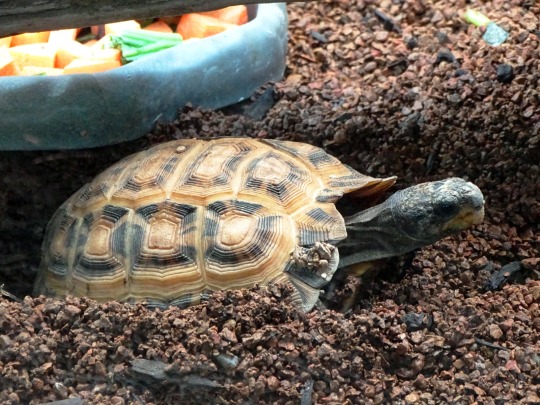
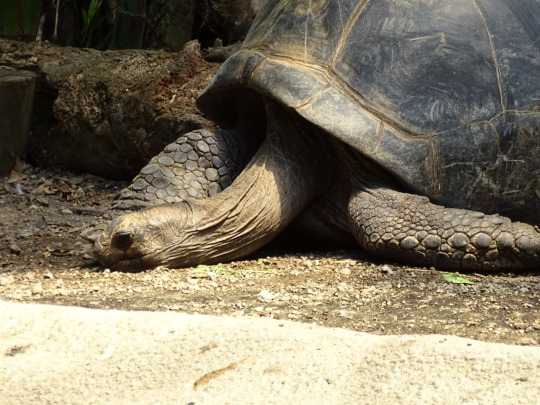
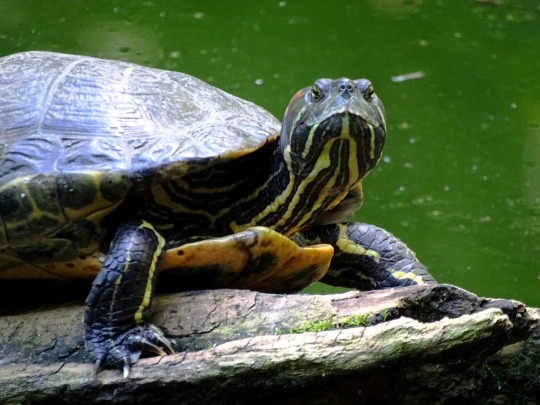
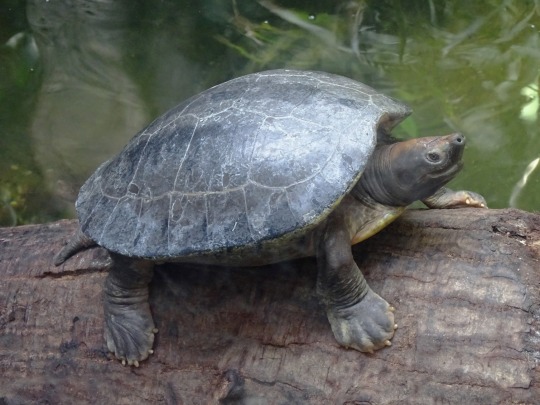
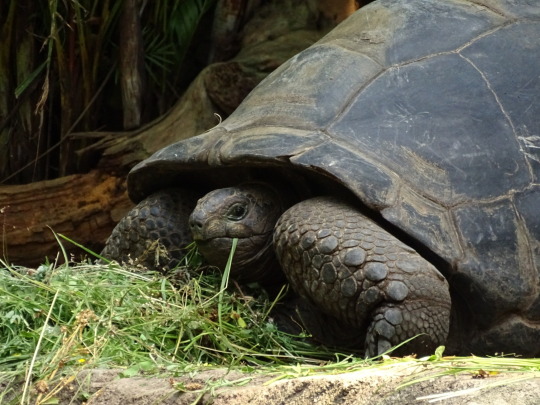
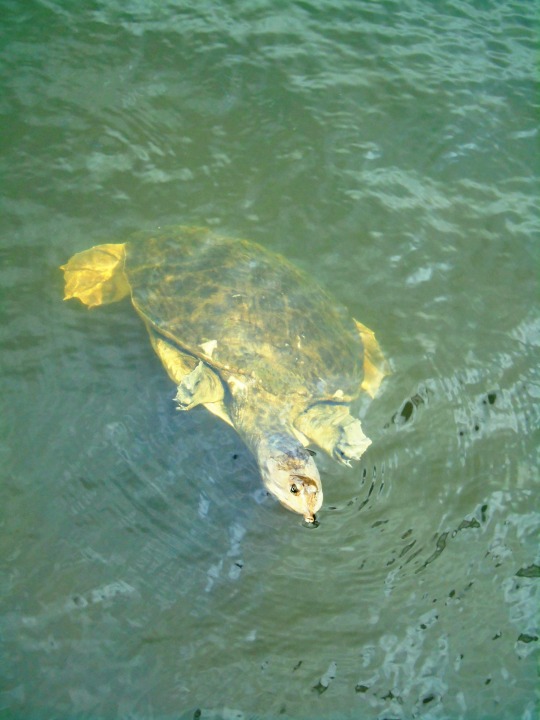

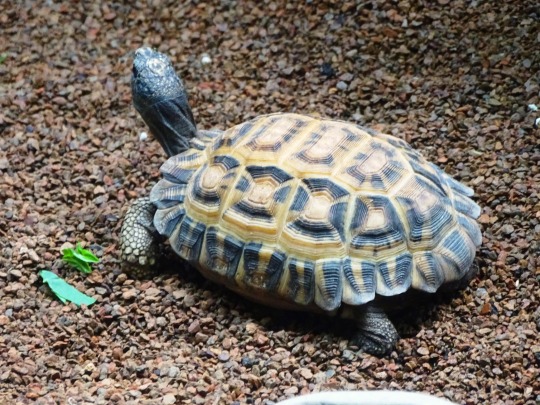
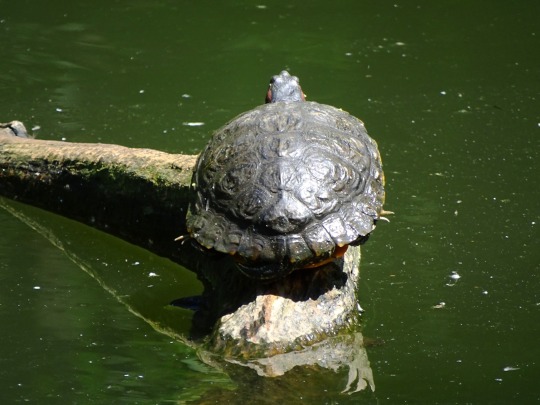
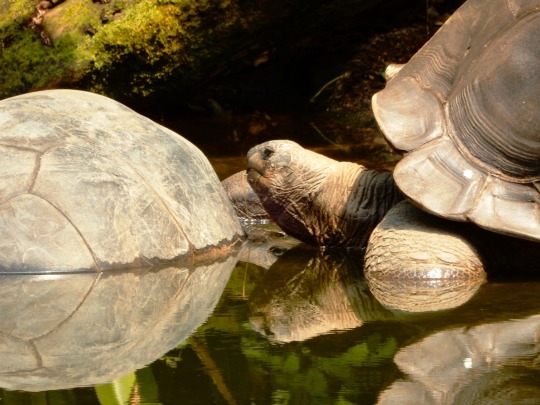

Turtle Adoption Day
Turtle Adoption Day is a "day of action for the protection of endangered reptiles." Specifically, the day supports the welfare of turtles. It appears to have been created by a woman named Christine Shaw, who made a blog post on November 25, 2011, on the website of Found Animals, an animal welfare organization that works to find new homes for distressed and abandoned animals. The day was first observed two days later.
Having a turtle as a pet is a large undertaking and can be a lot of work. Turtles have a long lifespan, meaning having one as a pet is a long-term commitment. This may not be ideal for many prospective owners. Turtles also need specialized—and many times expensive—care when it comes to their food, water supply, and cages, which also may not make them ideal pets for many. Additionally, turtles are often carriers of salmonella. Generally, conservation organizations take the view that turtles belong in the wild, not in homes as pets.
Still, many people do get turtles as pets, and Turtle Adoption Day is about reacting positively to some negative decisions others have made in this regard. Some people who get turtles as pets treat them like throw-away pets: they purchase baby turtles, view them as mini-turtles, and give them away or release them into the wild when they grow. When turtles are released into the wild, their chances of survival are slim. Additionally, many turtles are endangered species and are hunted by humans and have threatened habitats. Turtles released in the wild can also become invasive species. They can multiply, and may then damage flora and fauna. But, some turtle owners take them to animal shelters when they get bigger and they don't know how to care for them, instead of releasing them into the wild. It is these turtles that Turtle Adoption Day works to protect.
Turtles live in almost all climates around the world, and are found on every continent except Antarctica. Most species are found in southeastern North America and South Asia. Only five species can be found in Europe. Turtles are part of the order of Testudines, an order that also includes tortoises and terrapins. Testudines are split into two suborders: Cryptodira and Pleurodira. Most turtles are Cryptodira. The main difference between the two is that Cryptodira retract their heads straight back into their shells, while Pleurodira fold their necks to the side when they retract their heads. However, sea turtles, which are Cryptodira, are unable to retract their heads into their shells. Turtles are then split into 13 families and 75 genera, and there are over 300 species in total.
Turtles spend most of their time in the water. Freshwater turtles live in ponds and lakes, coming on land to bask in the sun. Sea turtles spend most of their time in the ocean, coming onshore to lay eggs on the sand. Most of these webbed-feet reptiles have hard shells that protect them from predators. The top part of their shell is called a carapace and the bottom is called a plastron. The carapace is made up of about 60 bones, and is covered with plates made of keratin called scutes. Besides hard-shelled turtles, there are are also soft-shelled turtles and leatherbacks, which have a thick skin covering their carapace.
Turtles are not very social animals. They are most active during the day, when they spend their time searching for food. Most are omnivores, eating animals such as fish, insects, mollusks, crayfish, snakes, frogs, worms, clams, and other turtles, as well as grasses, algae, and other plants. Their diet varies depending on their species, with some subsisting on a mostly vegetarian diet.
Like birds, turtles have beaks and no teeth. They also are egg-laying animals. After digging a nest on land in sand or dirt, they lay their eggs and leave; they don't nurture their young once they are born. Turtles lay between 20 and 200 eggs at a time, depending on their species. Most of their eggs are eaten by carnivores before they hatch, and many are eaten after they are hatched, as the baby turtles do not yet have fully-developed shells to protect themselves.
Turtles vary in size, but some may grow very large. The largest freshwater turtle in North America is the alligator snapping turtle, which can grow up to 2.5 feet in length and weigh up to 200 pounds. The largest sea turtle is the leatherback turtle, which can grow to about 4.5 to 5.25 feet in length and weigh between 600 and 1500 pounds. The largest soft-shelled turtle is the Yangtze giant softshell turtle, which can grow up to 3.6 feet across and weigh as much as 309 pounds.
Many species of turtles are threatened, endangered, or critically endangered. Additionally, many turtles who were once pets have ended up in shelters because their owners weren't able to properly care for them. This makes it even more necessary that there is a day dedicated to caring for and protecting turtles. Today, on Turtle Adoption Day, we do our part to protect turtles by adopting those without homes.
How to Observe Turtle Adoption Day
The most appropriate way to observe the day is to adopt a turtle that was once someone's pet. Turtles can be adopted through Found Animals or Petfinder, or through a reptile rescue organization. They can also be found in local listings such as Craigslist, as well as at local animal shelters. By giving them a new and proper home, you can help preserve one turtle's life, and help protect turtles in general, many species of which face endangerment. If you can't provide a home for a turtle, you could donate to a reptile rescue organization.
Before you adopt a turtle, it is imperative that you are prepared to do so. You must make sure you know what type of environment turtles need in order to live in captivity, and you must have a large enough habitat for your new turtle to live. For example, turtles need at least ten gallons of water per one inch of shell, and for each additional turtle, you need another ten to twenty gallons of water. They need a dry basking area where they can crawl around and dry off, they need access to lamps that give off heat and UVA and UVB rays, they need a submersible heater to keep water at a warm enough temperature, and they need a water conditioning solution and a filter. When adopting a turtle you must also remember that having one as a pet is a long-term commitment, they can be a lot of work, they can take up a lot of your time, and they can be expensive.
Source
#aldabra giant tortoise#Masoala Hall#Zoo Zürich#Zurich#New York City#animal#reptile#original photography#day trip#travel#vacation#tourist attraction#Red-eared Slider#Bronx Zoo#my favorite zoo#USA#TurtleAdoptionDay#TurtleSponsorshipDay#27 November#Giant South American River Turtle#Radiated tortoise#Spider tortoise#Florida#Florida Softshell Turtle#Green Cay Nature Center & Wetlands#East African black mud turtle
2 notes
·
View notes
Text
on a lighter note, I saw a florida softshell turtle at lake ella!
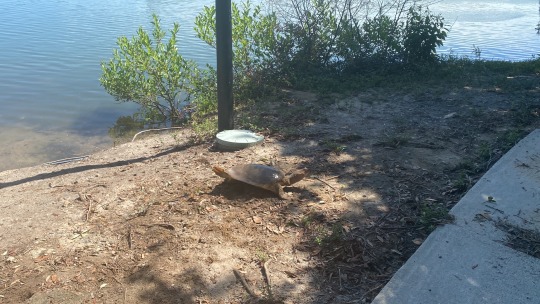
she is beauty she is grace she will kick dirt in your face
3 notes
·
View notes
Text
Merry belated Christmas everyone!!! I’ve been wanting to make a post for a while now but things have been pretty hectic between coming back from my trip to Florida and helping my family with last minute preparations for Christmas. After that my brain needed a few days to just be goop but I’m back now and want to talk about something pretty cool! So while I was in Florida me and my bf went to go visit this wetlands called Green Cay where you can walk around a board walk and see some pretty cool birds and reptiles. The day we went was pretty cold and cloudy (it was like that for most of the time I was there) so that meant there weren’t many reptiles out but it also meant there weren’t many people there either so we got to see a lot of really cool birds!
As soon as we pulled up to the parking lot we were seeing birds such as blue jays, northern mocking birds, common grackles (of course), a red-bellied woodpecker, mourning doves, and a bunch of squirrels. I know none of those species are rare so it makes sense that I would see them but I think it’s so cool to see species that I’m used to like blue jays, squirrels, and woodpeckers hanging out in palm trees.
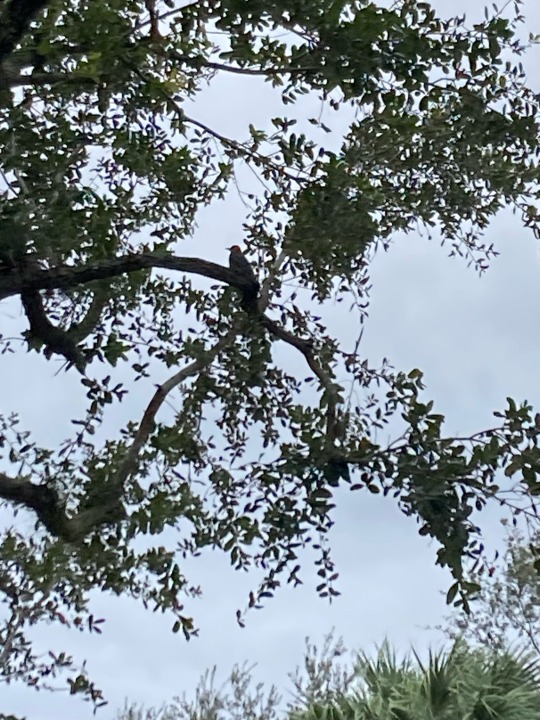
(Red-Bellied Woodpecker)
Next, we went into the visitor center where they had a few exhibits with animals. The first was a display about native frogs Vs invasive frogs that had Cuban tree frogs and cane toads for the invasive species and green tree frogs, pig frogs, and southern toads for the natives. Sadly, I could only find the Cuban tree frog, cane toad, and pig frog since the glass was super foggy and the frogs like to hide anyways. They also had an American kestrel named Kilee and an Eastern screech owl named Oliver in little flight cages. Both birds were born in the wild but now have injuries that prevent them from flying so they have to live the rest of their lives at the center. The sign said Oliver had been hit by a car and for Kilee it just said she had problems with her wing feathers so idk what happened to her. There was also two tanks one that had turtles (peninsula cooters, Florida softshell, and Florida red-bellied) and a second tank that had some baby American Alligators.
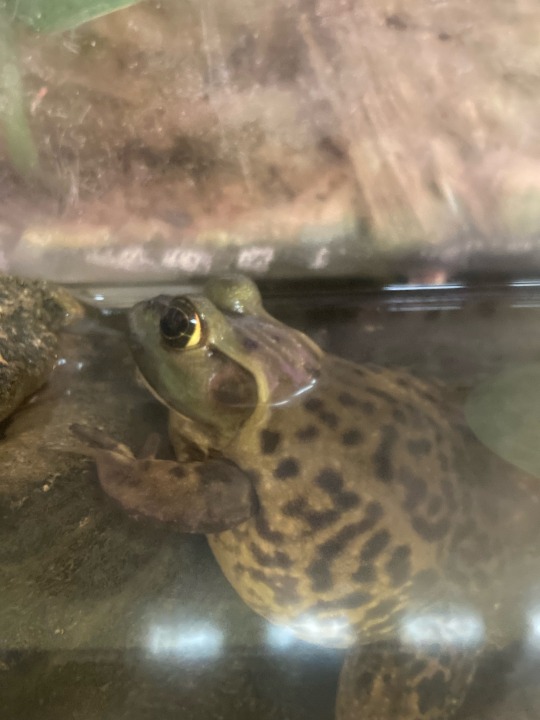
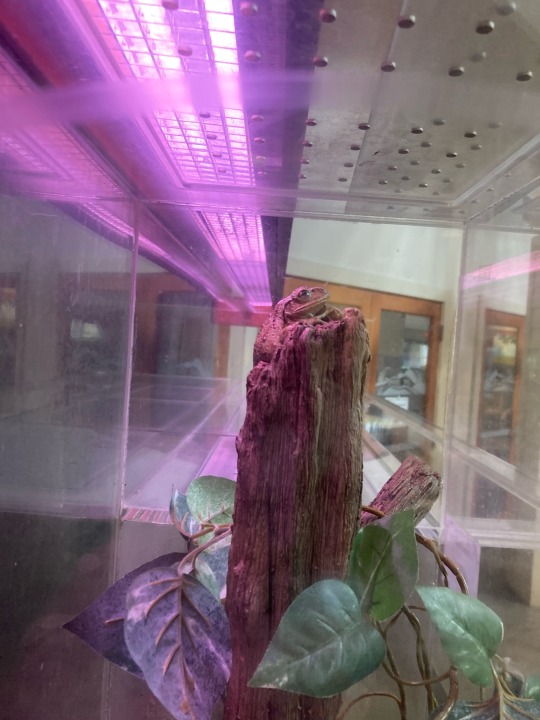
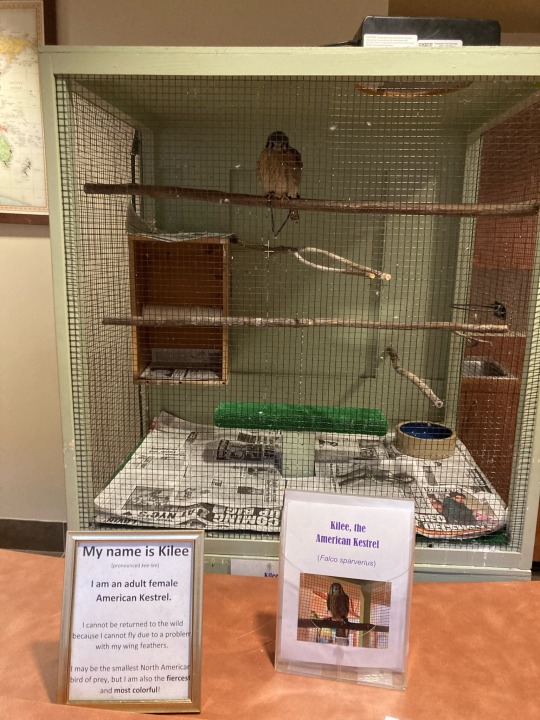
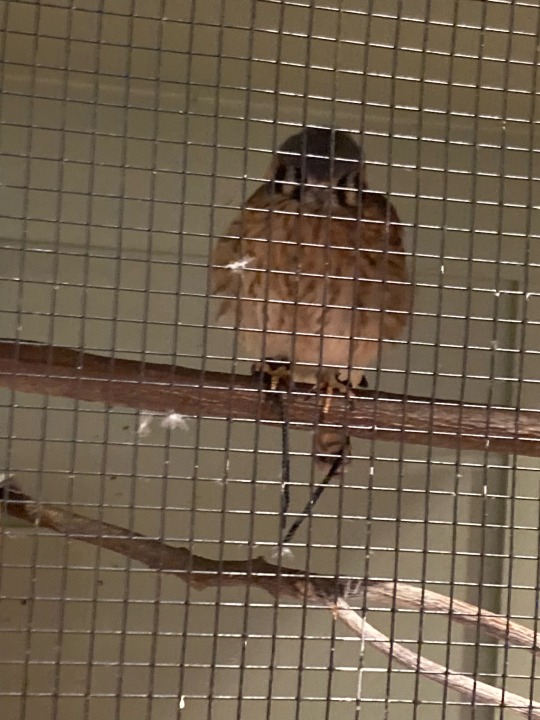
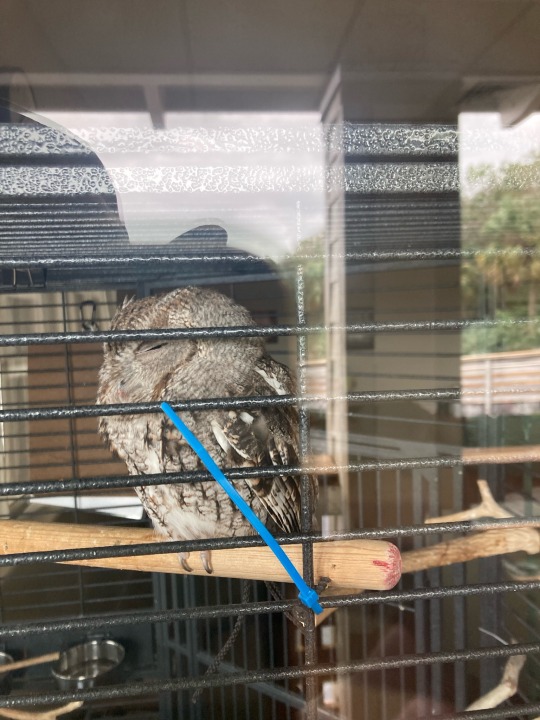

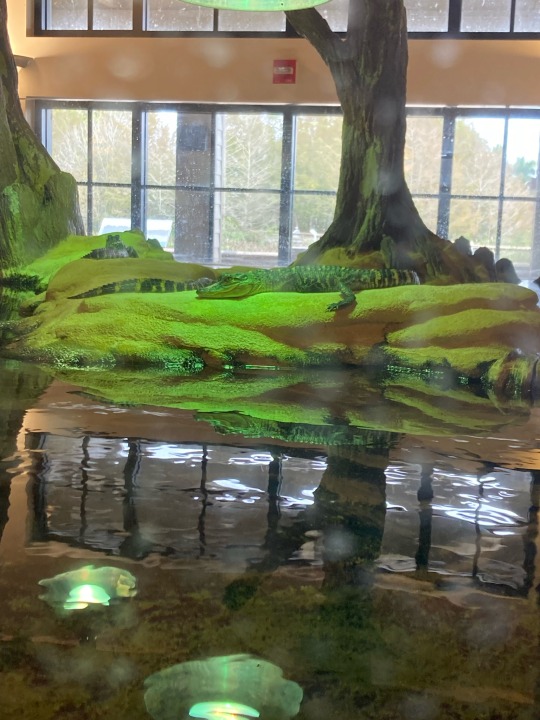
(Pig frog, Cuban tree frog, Kilee the American kestrel, Oliver the Eastern screech owl, peninsula cooter, and American alligator babies)
In the actual park we saw lots of cool species since there weren’t many people out. Like I said no alligators though since it was pretty cold out but we did see plenty of iguanas, a massive Florida Softshell in the water, and a basilisk lizard sitting in a tree!
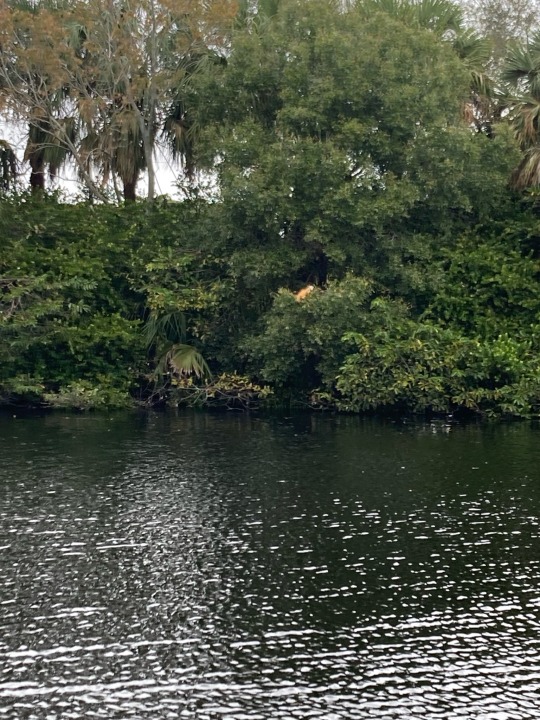
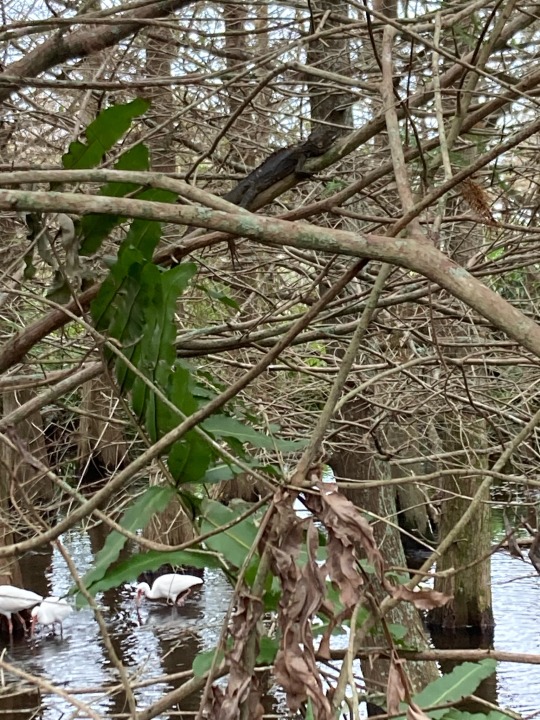
(Large male green iguana and either a brown basilisk or a green basilisk who isn’t showing off his coloration we couldn’t tell)
That’s all the pics I can add to this post so I’m gonna make a part 2 with all the birds we saw.
#animals#florida wildlife#florida softshell turtle#florida#green cay#wetlands#north american wildlife#wildlife#animal lover#tree frog#kestrel#screech owl#american alligator#turtles
5 notes
·
View notes
Video
Florida Soft Shell Turtle Bedding by Lutfi Shedraway Via Flickr: On a very, very rare occasions, these types of turtles emerges from the water, I had such a rare occasion. She dugged a hole to lay her eggs and that is for the most of the times when these type of turtles are seen outside water bodies. They like swamps and they like to submerge most of the times, only sneaking enough to breath air. They like calm waters vs currents/flowing water. Its named Florida Softshell Turtle because, they are hardly found outside Florida and they have leather like soft shells vs. the hard shells, other turtles are known for. The Florida Softshell turtle is almost entirely aquatic, only emerging from the water to bask or to lay eggs. In the water, it prefers to bury itself in the sandy/muddy substrate. Like all Softshell turtles, it is very fast-moving in water. While this species is omnivorous, its diet consists largely of meat, consuming mainly fish, insects, crustaceans, frogs and mollusks. It may also scavenge.
#Softshell Turtle#Florida Softshell Turtle#Laying Eggs#Basking#Pig like Nostrils#Leather Like Shell#Blue Eyes#Bedding#Grass#Turtle Face#flickr
0 notes
Text


Warning: No pancake stacking.

Turtle behavior info found on Reptifiles!
1 2 3 [You are here!] 5 6
#rise of the teenage mutant ninja turtles#rottmnt#rottmnt Donatello#Donatello Hamato#rottmnt Donnie#rottmnt meme#Florida Softshell Turtle also known as the flatback river flyer or pancake turtle#Technically the Reptifiles page is on Red Eared Slider turtles rather than Softshell turtles specifically#But considering the little I know about turtle rib cages? Yeah. Probably best to not stack them regardless of species.
86 notes
·
View notes
Text
What kind of creatures reside in the murky, mucky storm water retention pond at my work?
One of the world's smallest! The Least Killifish is the smallest live-bearing fish in the world! They live alongside a zillion Eastern Mosquitofish and possibly some other species I haven't caught yet to identify.
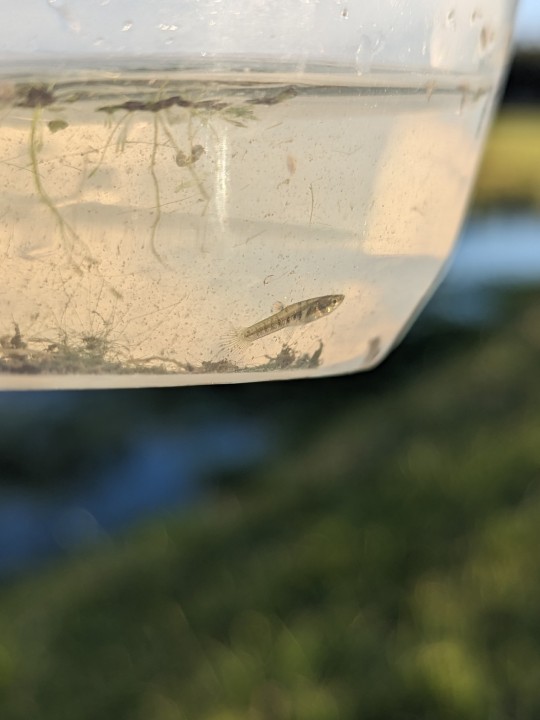
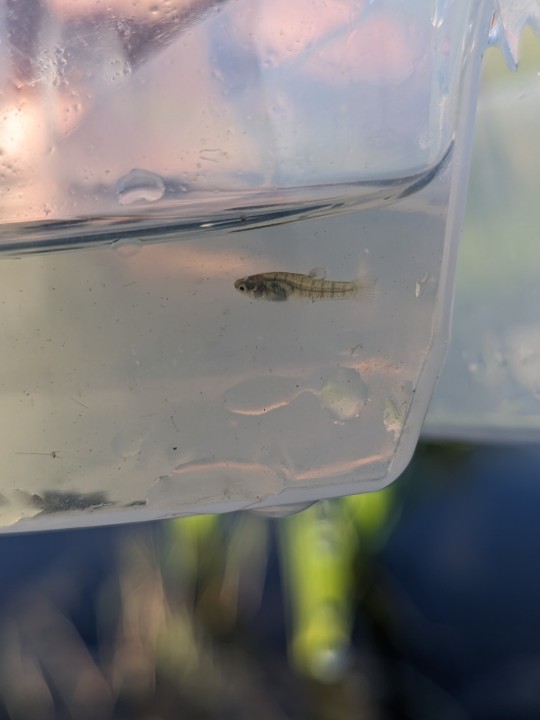
A bunch of softies! I see softshell turtles a lot, butI haven't looked up what species they are yet.

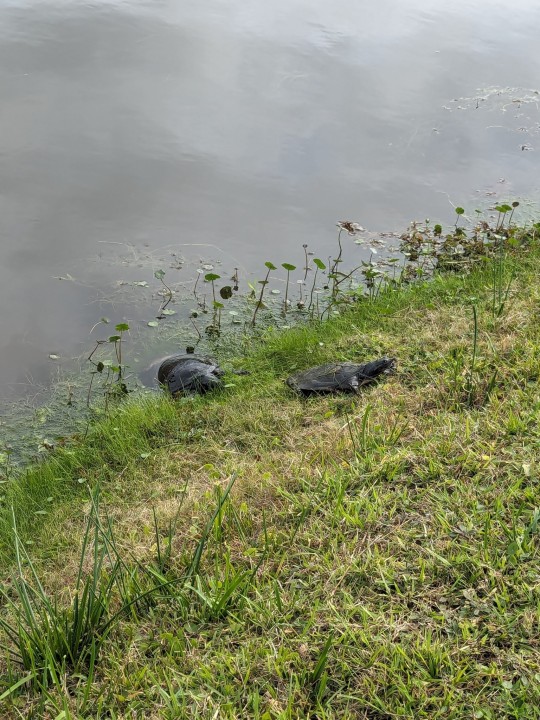
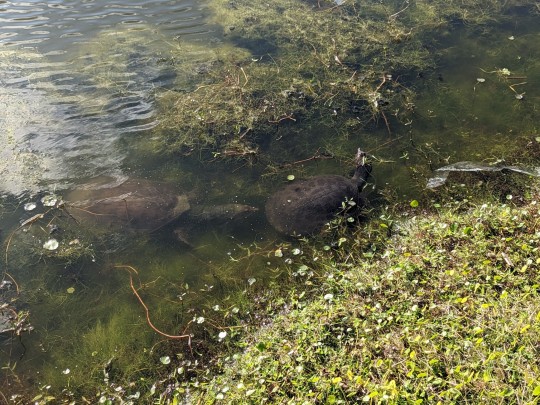
Giant, hella invasive fish! (Plecostomas added a while ago to control algae. They do not) Thankfully, the pond does not directly output to any other bodies of water, even if it floods, and it has a fish fry control grate on the overflow outlet for the grass carp that were recently added.

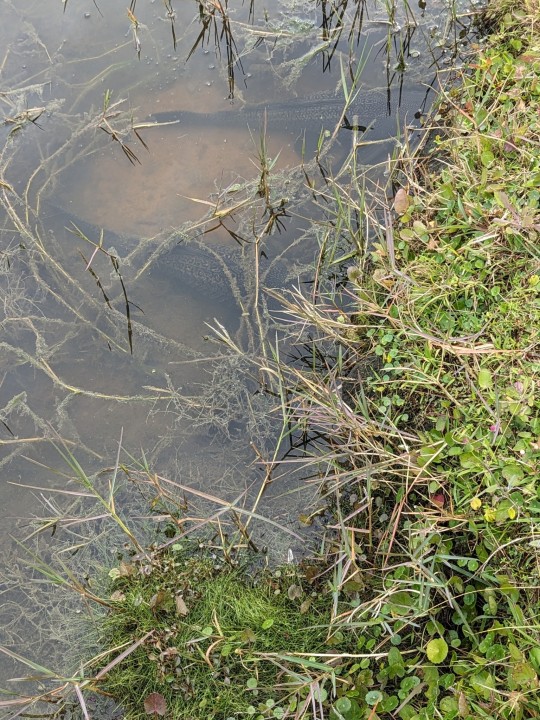

Gators!! Mainly small ones, safely growing bigger away from the adults. I see them basking or floating almost every day. I stumbled on this guy napping while I took a walk.
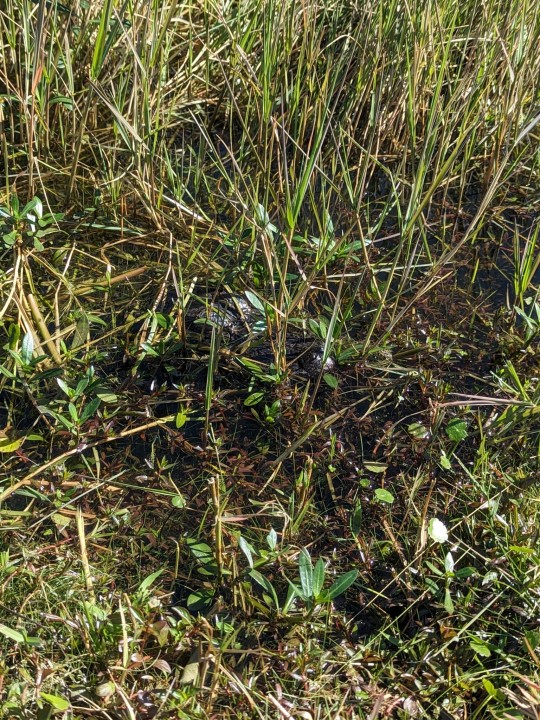
I recently got up enough courage to offer to help take care of the pond, which has an immensely thick layer of muck on the bottom and so little oxygen that the fish hang out in a few shallow channels most of the time.
To my surprise, management happily agreed and is giving me everything I requested to take care of it, including a nice aerator and hundreds of dollars of beneficial bacteria tablets. Even my suggestions to change the landscaping routine and plant native pond plants were enthusiastically accepted.
After being fired from a well paying job because I dared to ask for (completely free, barely visible) disability accommodations, this event is mind blowing to me.
#pond#fish#least killifish#plecostomas#natural pond#fish pond#Florida#nature#softshell turtles#turtles#turtle#described#described images
5 notes
·
View notes
Text

Sunshine State residents, do you recognize this little neighbor? It’s the Florida softshell turtle (Apalone ferox)! Unlike many turtles, you might find this critter darting about on land or swimming rapidly in water. Its hydrodynamic, flattened shell, and four strongly-webbed feet help it to move swiftly. Softshells stick mostly to water and have long necks and snouts that they poke above the surface, like a snorkel, to breathe. Juveniles have more contrasting color patterns than adults: their carapace, or shell, can be olive, tan, or light brown with spots and a yellow rim.
Photo: kimberry, CC BY-NC 4.0, iNaturalist
#science#nature#natural history#animals#did you know#fact of the day#turtles#herpetology#florida#cool animals#weird animals#reptile
3K notes
·
View notes
Text


Florida Softshell Turtle (Apalone ferox), juvenile, family Trionychidae, Florida, USA
photograph by Lucas Cottereau
359 notes
·
View notes
Text
Wet Beast Wednesday: spiny softshell turtle
It may be neither Flat Fuck Friday nor Turtle Tuesday, but because this is my series and I can do what I want, I'm talking about a very flat turtle. The spiny softshell turtle (Apalone spinifera) is the most widely distributed and possibly the most common softshell turtle in North America. Its range covers most of the Eastern half of the USA and stretched into Canada and Mexico. There are 6 subspecies separated by geography and hybridization can happen in places where their ranges cross. Hybridization has also been known to happen with the Florida softshell (Apalone ferox). The subspecies are the northern (A. s. spinifera), gulf coast (A. s. aspera), Texas (A. s. emoryi), pallid (A. s. pallida), Guadalupe (A. s. guadalupensis), and black (A. s. atra) spiny softshells.

(Image: a spiny softshell turtle seen from above and to the side. It is a turtle with a wide, flat shell. Its head and one foot are visible. The head is skinny and has an elongated nose. The foot is wide and flat, with webbed toes. The turtle is an olive green with black dots on the skin, yellow stripes on the face, and dark spots on the shell. End ID)
The thing that makes a softshell a softshell is the lack of keratinized scutes on their shells. This makes the shells smooth and leathery. The center of the shell has a layer of solid bone user it, but this does not extend to the edges of the shell, making it less rigid. Softshells are the fragile speedsters of the turtle world. Their shells are a lot lighter and often more streamlined, allowing for faster movement both on land and in water, but they provide less defense. Spiny softshells have spiny projections along the front edge of the carapace (upper shell), with males having more than females. They are some of the largest North American freshwater turtles. Females can reach a carapace length of 54 cm (21 in) and 11 kg (25 lbs) while the smaller males max out at about 25 cm (10 in).

(Image: a spiny softshell being held by a person, seen from the front. The leading edge of the carapace is visible, showing off the small spines. End ID)
Spiny softshells have wide, flat, paddle-like feet with three claws and an elongated nose that acts like a snorkel. The turtles are born a bright olive color with striped faces and dark spots on the shell. Males keep their juvenile coloration for their entire lives while females grow darker ad lose many of their markings. It can be very difficult to tell females of different subspecies apart, while males and juveniles can be distinguished by their markings. Smooth skin and highly vascularized membranes in the cloaca, mouth, and throat allow the turtles to breathe by diffusing dissolved oxygen from the water into their blood.

(Image: a male and female spiny softshell facing each other. The male is less than half the size of the female and has an olive colored shell and skin, with dark spots on the shell. The female is a uniform muddy brown color. End ID)
Spiny softshells are generalists able to live in a wide range of habitats. They prefer streams, rivers, and ponds with muddy or sandy bottoms and high visibility, but can live in most freshwater habitats. Softshells are diurnal, spending their days basking and feeding. Being turtles, they are ectothermic, meaning their body temperature matches the surrounding temperature. To warm themselves up, the turtles bask in the sunlight. They can often be found resting on exposed rocks, logs, sandbars, or shorelines. While not particularly social animals, the turtles will bask in groups. When threatened, softshells will attempt to swim away and/or bury themselves. In the right sediment, a softshell can bury itself in under a second. Because their shells are less rigid, softshells have to actively defend themselves when cornered and will bite and scratch. People have to be careful when handling them. They brumate (that's hibernation for reptiles) during winter. While brumating, they bury themselves underwater and slow their metabolism and oxygen requirements. In this state they can fully sustain themselves on oxygen absorbed through their skin or special membranes.

(Image: a spiny softshell turtle buried in its hunting strategy. Only the head is visible above the sand. End ID)
They are primarily carnivores and will eat anything that can fit in their mouths. Aquatic insects, crayfish, worms, amphibians, mussels, snails, fish, and more are on their plate. While capable of fast swimming, they are not pursuit predators. They employ two primary hunting strategies. The first is to bury themselves in the sediment and wait for prey to come by. The second is digging in the sediment to find worms and other animals. Fish have been known to follow digging turtles around to feed on animals unearthed by them.

(Image: a spiny softshell in captivity. It is swimming at the surface of the water in a tank, amongst artificial leaves. End ID)
Spiny softshells mate in spring. Males attempt to woo females by swimming over to them and bumping heads together. The male then sits on top of the female to mate. Unlike most species of turtles, the males do not grab onto the female's shells during mating. Eggs are laid between summer and early fall and will hatch next spring. The female will dig a nest in sandy or gravelly banks and bury the eggs once they have been laid. She provides no further care. Females will typically mate multiple times each year, with each mating having a different nest. The juveniles take 8 to 10 years to reach sexual maturity and they can live up to 50 years in the wild. Many turtles determine sex by the temperature the eggs are incubated in. This is not the case with spiny softshells, who have genetics based sex determination.

(Image: a group of 5 juveniles. The photo focuses on two who are sitting next to each other. One has its front right leg on the shell of the other. They have similar coloration to an adult male. End ID)

(Image: a newborn emerging from its egg. The egg is round and white, looking like a ping-pong ball. Only the head of the turtle has emerged. End ID)
Most subspecies of spiny softshell are classified as least concern or near threatened by the IUCN, meaning they are not in danger of extinction. The exception is the black spiny softshell, also known as the Cuatro Ciénegas softshell, which is critically endangered. The primary threats to the turtles is habitat loss due to human activity. Adults have no natural predators outside of the Florida and adjacent state populations, which are prey to alligators. Juveniles are eaten by a variety of animals including fish, snakes, raccoons, and herons. People will also eat the adults. Because it can take a whole decade for juveniles to become reproductive, losses in population take a long time to replace. They have been introduced to areas outside of their native range, most notably the western USA. Most of these introductions are due to people releasing pet turtles into the wild.

(Image: someone holding a juvenile. The shell is 2-3 times the size of the human's thumb. End ID)
#i typoed it as softhsell more times than I care to admit#wet beast wednesday#turtle#turtles#softshell turtle#soft shell turtle#spiny softshell turtle#reptile#biology#zoology#ecology#animal facts#freshwater ecology#aquatic biology#informative#educational#image described#turtle power#herpetology
79 notes
·
View notes
Text










Some concepts for my TMNT AU. I just doodle for it because I like character design. Design notes under the cut.
Leo is a cumberland slider. It's similar to a red-eared slider and yellow bellied slider and other pond sliders. They're quick and sleek.
Raph is a common snapping turtle. Common snappers are more aggressive than alligator snappers. And I thought it was fitting, since he's more hotheaded than rottmnt's Raph. Snapping turtles have smaller plastrons than most other turtles.
Donnie is an eastern spiny softshell. I probably would've made him a florida or smooth softshell so he was a little different from rottmnt Donnie, but I just like the look of the spiny the best. He has his own version of the battle shell, but it won't be as advanced as rottmnt Donnie. It comes with robot arms to give him some extra hands while he works, and serves as a protection for his shell since it's different from his brothers. Without the battle shell, he's the fastest and most flexible, but most vulnerable. With it, he has the best defense and can scale walls, but loses his speed.
Mikey is a midland painted turtle. Midland is like an in between of the Western and Eastern painted turtles. Mikey leans a little more western though. He has yellow markings on his face, but they're red on his body. They should technically be stripes, but I'm pushing it. Painted turtles are pretty similar to sliders, but smaller. I chose painted for Mikey because the name fit his artistic characteristic.
Mona Lisa is an MMA fighter, her real name is Elisabetta "Lisa" Miles. Her sister is Vanessa Miles(based on Venus). They may or may not get mutated, idk. Vanessa has a pet turtle. Probably either a box turtle or red eared slider because they're the common to have as pets.
Leatherhead is a must. I'm going for a primarily 2012 type backstory for him. Mutated Alligator prone to animalistic fits of rage. I always thought a loincloth would suit him. That tail will not accommodate pants.
Tokka and Slash are merged into one character, but I liked the name Tokka better. I chose the alligator snapper for them because they're very large and have an intimidating look, as well as a powerful bite. Again, Snapping turtles have smaller plastrons than most other turtles.
I liked Timothy(although they played up his annoying aspects a bit too much), due to his potential as a friend for Donnie. It was a shame they totally abandoned him without even finishing his plotline.
Fugitoid/Professor Honeycutt. Haven't really figured out how I want to incorporate him, but he's enough of a TMNT staple that I want to include him. I just don't want to get too crazy with alien stuff. Having the Kraang around can get crazy enough.
Renet is either a seamstress or physicist(maybe both?), because I don't like time travel gimmicks.
#tmnt#tmnt au#tmnt leonardo#tmnt donatello#tmnt raphael#tmnt michelangelo#leatherhead#professor honeycutt#slash#tokka#tmnt timothy#renet tilley#a3 art#traditional art#fanart#sketch
52 notes
·
View notes
Note
Hii, here's my always go to question but do you have a tmnt au/interation
If so what do the turtles look like and what's it about :33
Hi!! I do in fact have multiple Tmnt iterations of my own because I can’t stop myself from making them. I plan on eventually posting on here about them but I’m not quite ready for that yet :]
My main iterations main inspiration was all of the turtles were based off of me and people I know. It’s mostly me messing around with characters and stuff. Plus Splinter owns a bakery and they live above it instead of the sewers :D
And these are my silly turtles

Raph is a common snapping turtle (She/they/he) and Mikey is an Eastern box turtle (He/they) and they’re twins and also the oldest!
Donnie is a Florida softshell (They/he) because I thought it would be funny if they always made Florida man jokes about them even though they’ve never been to Florida lmao
And then Leo who is the youngest is a Cumberland slider (He/him)
Sorry for the long answer I like talking about my turtles :]
#tmnt fan iteration#tmnt original iteration#tmnt iteration#tmnt#teenage mutant ninja turtles#tmnt donatello#tmnt leonardo#tmnt raphael#tmnt michelangelo#Teenage mutant Baker? turtles#it speaks!☁️#my art☁️
15 notes
·
View notes
Text
I just realised I never put my thoughts about Big Mama's assistants species in one place. Lemme just fix that real quick.
Said rambling thoughts under the cut, cause I have A Lot
Ok, so, Big Mamas assistant was only shown a couple of times in the show. Very briefly. She never speaks and basically all we see is this:

Interesting design, but not much to go on
But then in the 40th anniversary comic special we get exactly one tiny drawing of her face:

Exciting! And she has facial markings! And THIS is where I go off the deep end.
So our other four boys are all species native to the East side of North America, great lakes area and down south to Florida basically. And none of them share a genus with each other. This is important I swear.
Raph is an Alligator Snapping Turtle, Macrochelys temminckii
Leo is a Red Eared Slider, Trachemys scripta clogans
Donnie is a Spiny Softshell Turtle, Apalone spinifera
And Mikey is an Ornate Box Turtic, Terrapene ornata ornata (I also find it amusing that Mikey is extra ornate, it's there in his scientific name twice! Fancy lad)
Anyway, with all that in mind: yellow/orange blotchy but symmetrical markings, native range, and different genus I have personally decided that she must be a:

Spotted Turtle 🎉
Clemmys guttata, native to the great lakes (minus Superior) and the eastern edge of the USA down to Florida. They have distinctive yellow/orange markings similar in position and size to a red eared sliders, which lines up with the sisters markings being similar in size and location to Leo's. Thus making Spotted Turtle the perfect candidate for her species, in my personal opinion!
In the interest of full disclosure my girlfriend thinks she might be a Yellow Blotched Map Turtle:

Graptemys flavimaculata. But I disagree, the marking look far too yellow, geometric, and plentiful to me.
Anyway thank you for coming to my Turt Talk! Coming up next: What kind of Ninpo power does she have?
#rottmnt#rottmnt frida#big mamas assistant#turt talk#turtle species#thoughts and opinions#rotten posting
5 notes
·
View notes